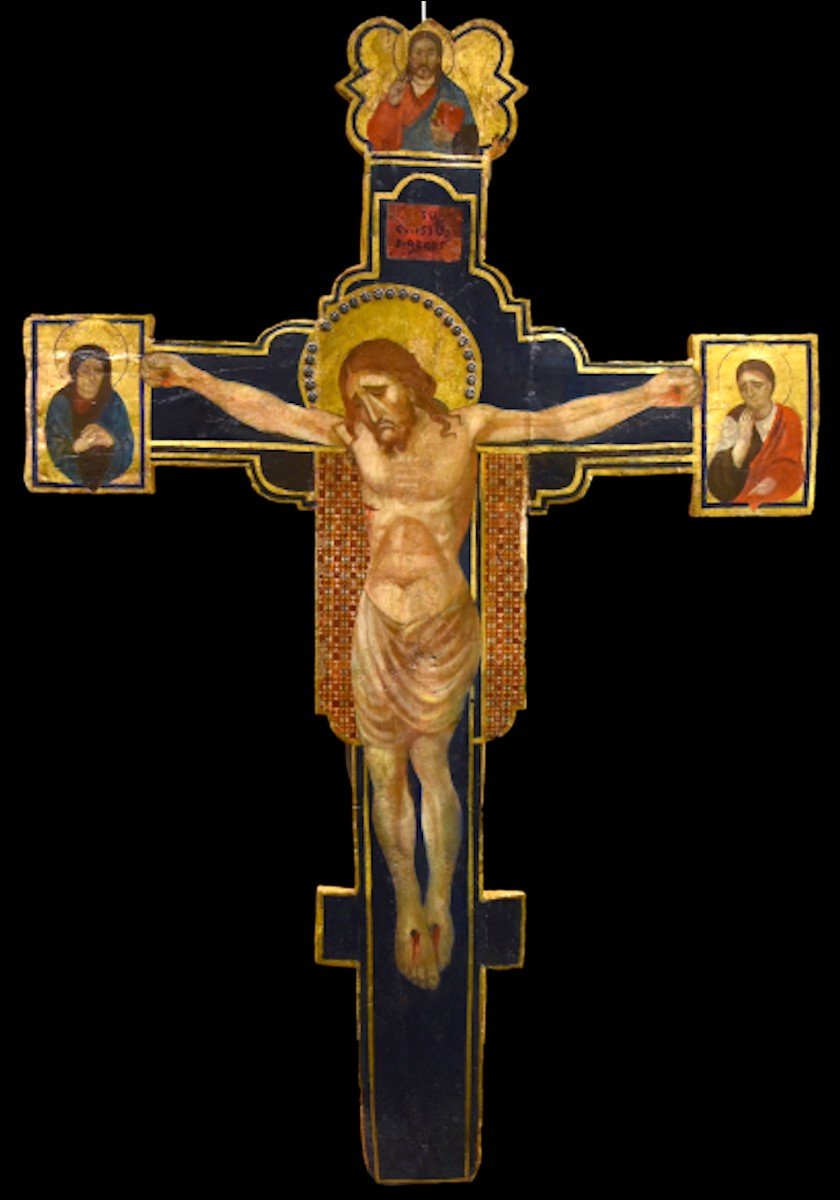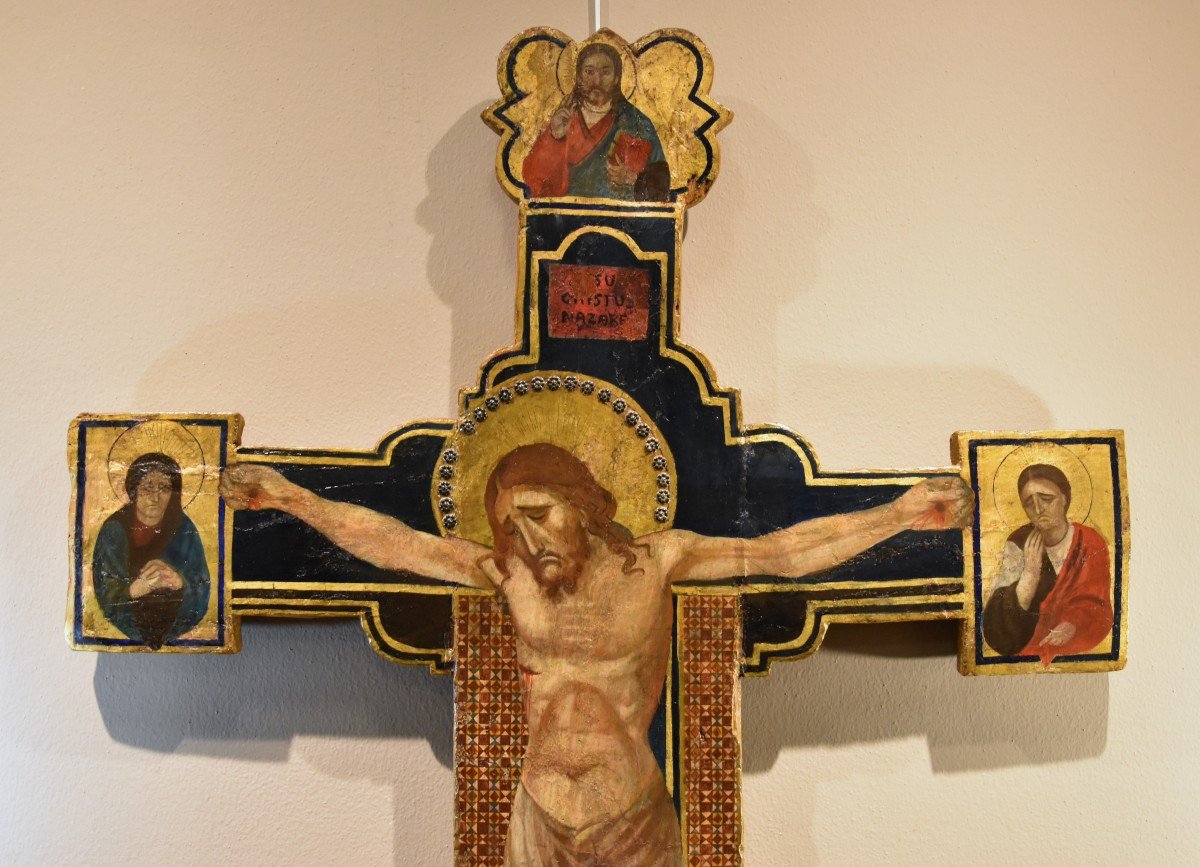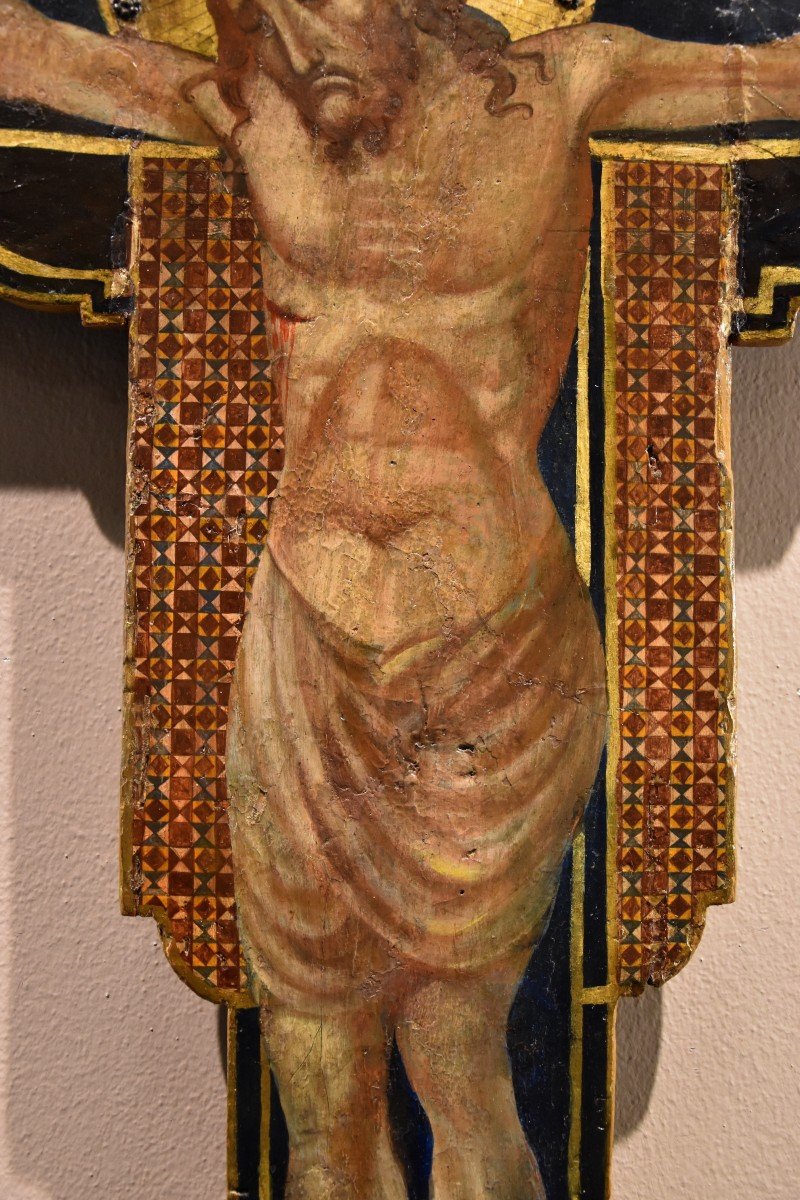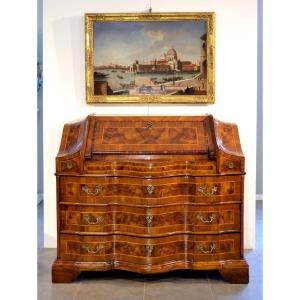In the manner of 14th century Tuscan painting
Tempera on panel
Height: 150 cm
Width: 99 cm
Performed non-invasive conservation restoration (photo of the work before intervention in detail)
Full photographic details (Click HERE)
We present this precious antique crucified Christ, with God the Father blessing on the cymatium, the grieving Madonna and St. John in the side terminations; the latter, weeping, are the figures mentioned in the gospels, present at the foot of the cross and who witnessed the sacrifice of Jesus, thus having an important value of testimony and participation.
The work, a tempera on panel, is executed in the manner of 14th-century Tuscan painting, following its standards of quality and style.
The first painted crosses, produced in Tuscany and Umbria in the 12th century, became the symbol of Christ's sacrifice and thus an emblem of Christianity. While in this first phase the typology of Christ was that of the Christus Triumphans, with the aspect triumphant over death, from the middle of the 13th century, with the preaching of Saint Francis of Assisi, who favoured the human aspect of Christ, the model of the Christus Pathiens was instead preferred.
A key work of this genre is Giotto's crucifix in Santa Maria Novella in Florence, not only for its quality, but also for the depth of its meanings and symbolic values, becoming a reference model for the painting of many followers.
Giotto renounces the beauty ennobled by the slender and geometrically perfect forms of the body (because they are divine) but improbable, in order to propose the body of an ordinary man, really nailed to the cross abandoned with all his weight physically visible.
The painter focuses on the realistic aspects of his condition, such as the colour of the flesh, the blood, the ribs pressing against the skin, the stretched tendons of the arms, the head leaning forward and the sense of exhaustion of the body.
As for the cross proposed here, we see a painting rendered according to the fourteenth-century canons introduced by Giotto: Christ has a recumbent head and great attention is given to the anatomical description of the body. It is made of shaped planks of soft wood; the painting is executed in tempera, but reveals a refined quality in the dosage of colours and chiaroscuro passages.
The halo, as well as the background of the terminal figures, is made with a gold background, also traditional. In our case, metal decorations are applied to the outline of the halo, a detail that does not belong to the Italian tradition, but seems to belong to the French Gothic taste.
ADDITIONAL INFORMATION:
Complete with certificate of authenticity and descriptive iconographic card.
We take care of and organise the transport of the purchased works, both for Italy and abroad, through professional and insured carriers.
Should you wish to see this or other works in person, we will be pleased to welcome you to our new gallery in Riva del Garda, Viale Giuseppe Canella 18. We are waiting for you!
Contact us for any information or to arrange a visit, we will be happy to answer you.
Follow us also on :
https://www.instagram.com/galleriacastelbarco/?hl=it
https://www.facebook.com/galleriacastelbarco/


















































 Le Magazine de PROANTIC
Le Magazine de PROANTIC TRÉSORS Magazine
TRÉSORS Magazine Rivista Artiquariato
Rivista Artiquariato